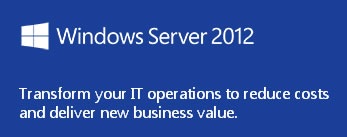
LOCAL CLOUD STORAGE SERVER WINDOW 7 SERVER WINDOWS
As well as supporting migrations from on-premise to Azure, it can help bring files from older Windows Server versions to Windows Server 2019 and its newer file system tools and services. Microsoft now offers a Storage Migration Service to help manage server upgrades. You can get a significant data saving with ReFS as part of Windows Server’s Storage Spaces. Offering up to 4TB files, it can use its integrity stream option to validate data integrity, as well as supporting file-system level data deduplication. You shouldn’t forget Microsoft’s alternate file system technology ReFS. It’s a good idea to migrate much of your file system traffic over to it, removing NTLM and SMB 1 from your network. It improves encryption and adds protection from man-in-the-middle attacks. The latest version of SMB, SMB 3.1.1 adds new security features to reduce the risks to your files. Image: Microsoft Building a modern file system You can manage multiple server migrations (to newer hardware or VMs) from the Windows Admin Centre interface. In a presentation at Ignite 2019, Ned Pyle, principal program manager on the Windows Server team, breaks it down into four steps: Learn/Inventory, Migrate/Deploy, Secure, and Future. That leads to a simple process for modernizing file systems, giving you a set of steps to follow when updating Windows Server and rolling out new storage hardware. It’s a pragmatic choice: on-premise storage can benefit from cloud lessons, while techniques developed for new storage hardware on-premise can be used in the cloud as new hardware rolls out. Much of Microsoft’s thinking around modern file systems is focused on hybrid storage scenarios, bridging on-premise and cloud services. Windows Server’s recent updates have added features intended to help modernize your storage systems, building on key technologies including Storage Replica and new tools to build and run scale-out file servers.

We might not be using a common shared drive for all those files anymore, but we’re still using those files and we still need servers to help manage them. New hardware is having an effect, with technologies like Optane blurring the distinction between storage and memory and providing a new fast layer of storage that outperforms flash.Īs much as organizations use tools like Teams and Slack, and host documents in services like SharePoint and OneDrive, we still run our businesses on files. There’s still a lot of work going into the platform, using it as a bridge between on-premise storage and the growing importance of cloud-scale storage in platforms like Azure.
Microsoft hasn’t forgotten the Windows File Server and the services that support it. There’s an added problem: many legacy file servers are still running the now unsupported Windows Server 2008R2. It was a change that forced system administrators to confront insecure connections and the applications that were still using them. There are occasional reminders of Windows as a file server, with Microsoft finally deprecating the aging SMB 1 file protocol, turning it off in Windows 10. It’s a list that goes on and on - and too often we forget that they’re still managing and hosting files. Now servers run line-of-business applications, host virtual machines, support collaboration, provide telephony services, manage internet presence. We do a lot with servers today - much more than the age-old file and print services that once formed the backbone of business. Defend your network with Microsoft outside-in security services


 0 kommentar(er)
0 kommentar(er)
